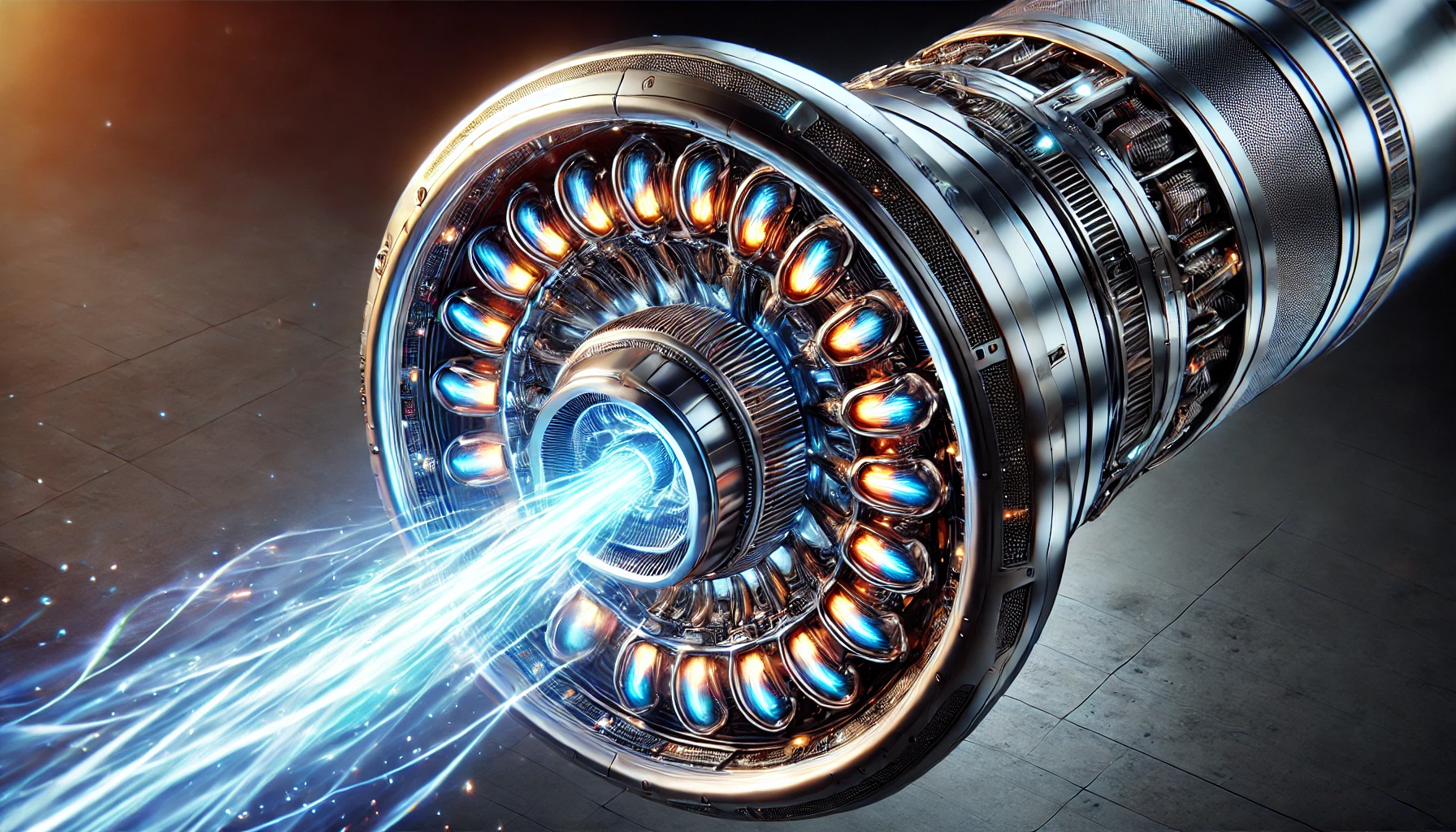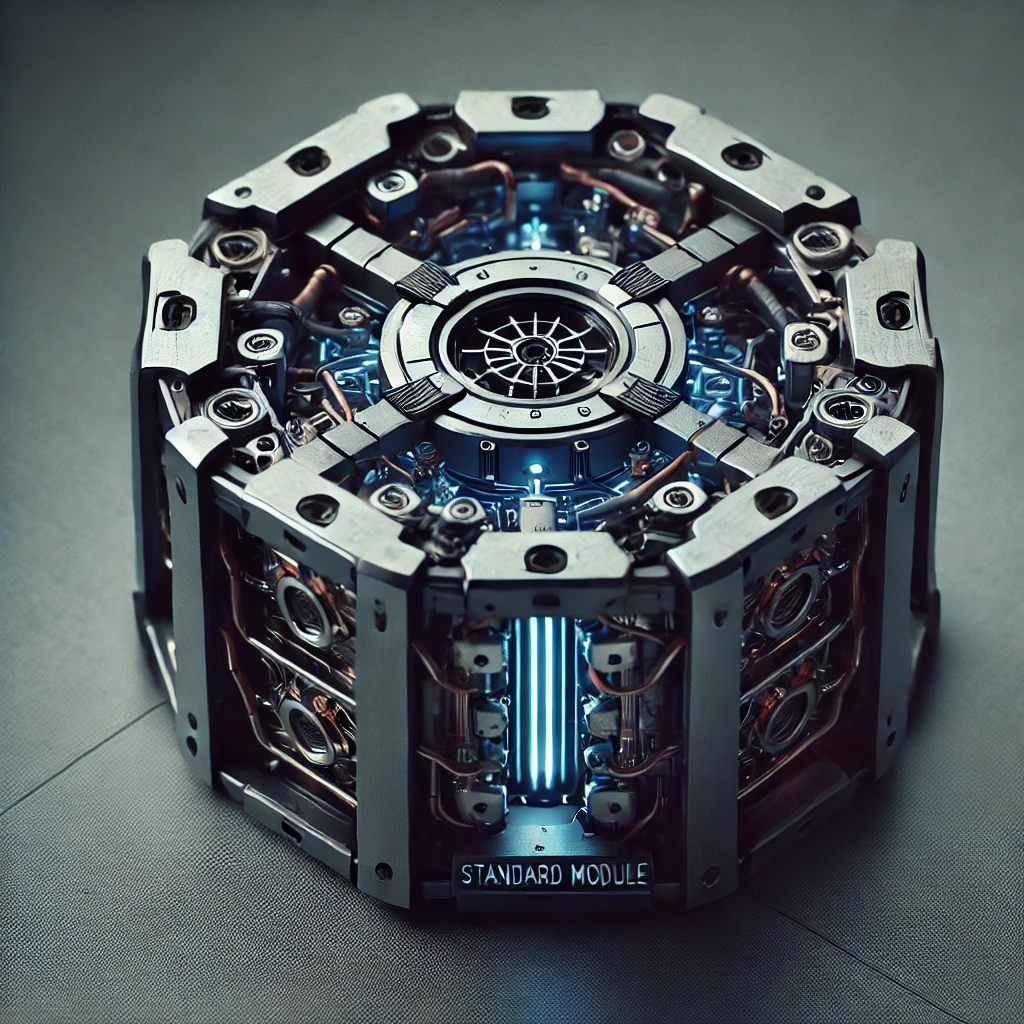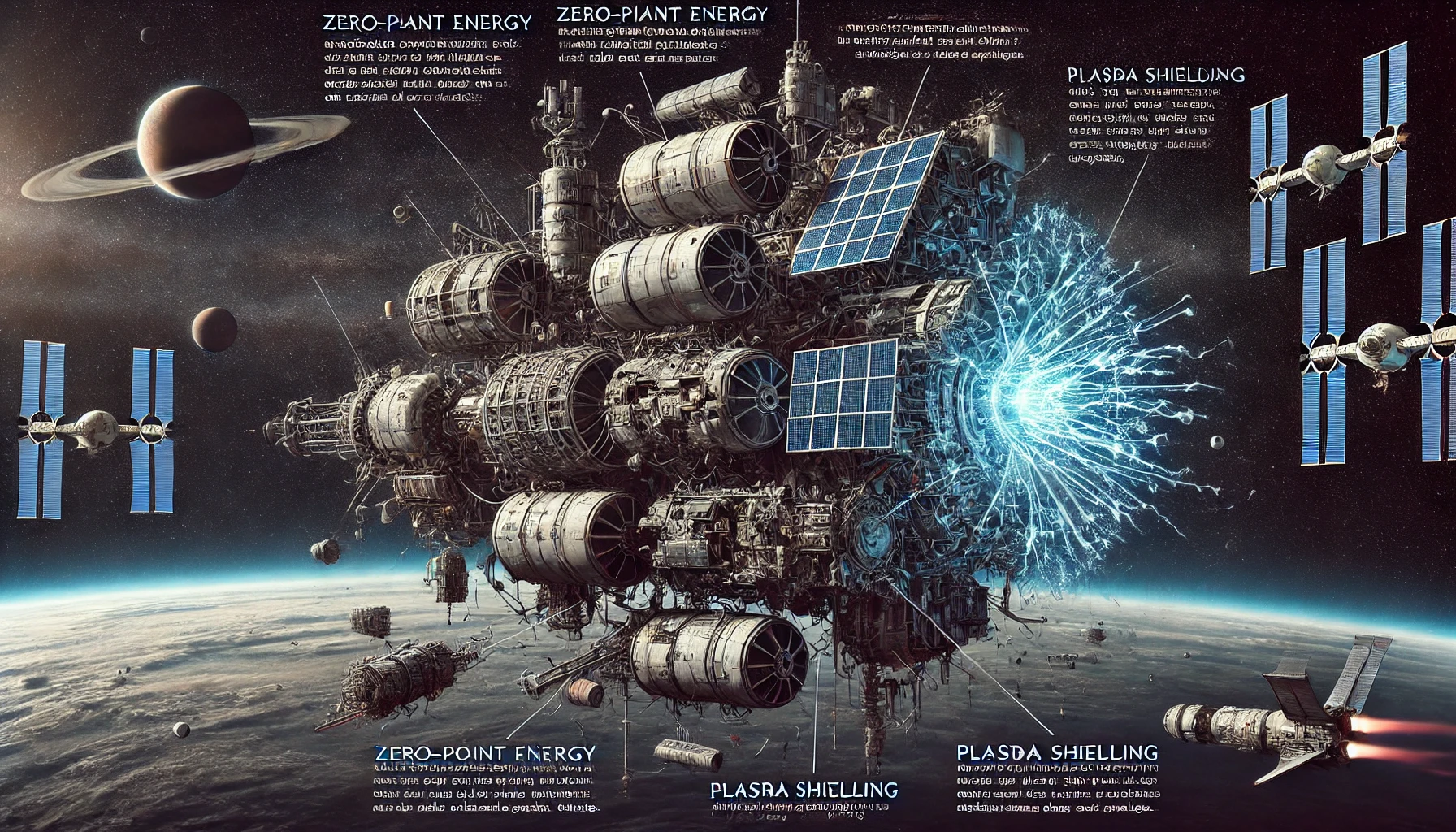“Propelling Humanity Beyond the Stars”
Electromagnetic Thrusters (EMTs) are the revolutionary propulsion technology that, alongside Zero-Point Energy, has ushered in a new era of space exploration in “The Lunar Syndicate.” Invented by Alexander Caldwell, these thrusters utilize electromagnetic fields to generate thrust, offering a clean, efficient, and powerful alternative to traditional rocket engines.
Functionality and Principles
- Electromagnetic Propulsion: EMTs operate by generating powerful electromagnetic fields that interact with ionized particles (plasma). These fields accelerate the ionized particles, creating thrust. The process can be represented by a fictionalized equation:
F = q(E + v × B)- Where:
Fis the electromagnetic force (thrust)qis the charge of the ionized particlesEis the electric field strengthvis the velocity of the ionized particlesBis the magnetic field strength
- Where:
- ZPE Power Integration: EMTs are powered by Zero-Point Energy (ZPE) Converters, which provide the massive amounts of energy required to generate the powerful electromagnetic fields and ionize the propellant. This integration eliminates the need for onboard fuel, allowing for sustained thrust and high-speed travel.
- Variable Thrust Control: EMTs offer precise control over thrust levels, enabling both gentle maneuvers and rapid acceleration. This is achieved by modulating the strength and configuration of the electromagnetic fields.
Form Factor and Integration in Spacecraft
- Thruster Modules: EMTs are manufactured in standardized thruster modules of varying sizes and thrust capabilities. These modules can be integrated into spacecraft during construction or easily swapped out for maintenance or upgrades.
- Vector Thrusters: Smaller EMT modules are often used for maneuvering and attitude control, providing precise thrust vectoring.
- Main Propulsion Thrusters: Larger EMT modules provide the primary propulsion for spacecraft, enabling high-speed travel and efficient orbital transfers.
- Propellant Injection System: While EMTs do not require traditional chemical fuels, they do utilize a propellant, typically an inert gas like argon or xenon. A sophisticated injection system precisely controls the flow of propellant into the thruster chamber.
- Heat Management System: EMTs generate significant heat due to the high energy involved in plasma generation and acceleration. Advanced heat management systems, often involving liquid cooling and radiative heat dissipation, are crucial for maintaining optimal thruster performance.
Specifications
- Thrust Output: EMTs can generate a wide range of thrust, from millinewtons (mN) for fine control to kilonewtons (kN) or even meganewtons (MN) for powerful propulsion. Thrust output is directly proportional to the power input from the ZPE Converters and the efficiency of the electromagnetic field generation.
- Specific Impulse: EMTs boast extremely high specific impulse (a measure of propulsion efficiency), often exceeding 10,000 seconds. This translates to significantly less propellant consumption compared to traditional rockets, enabling longer-duration missions and higher delta-v capabilities.
- Acceleration: EMTs are capable of achieving high acceleration rates, allowing for rapid changes in velocity and direction. This is particularly important for interstellar travel and maneuvering in complex orbital environments.
- Power Consumption: EMTs require substantial power input from ZPE Converters. The power consumption is directly related to the thrust output, with larger thrusters requiring terawatts (TW) or even petawatts (PW) of power.
- Operating Temperature: EMTs operate at extremely high temperatures due to the plasma generation process. Advanced materials and cooling systems are essential to withstand these temperatures and maintain thruster integrity.
- Lifespan: EMTs have a long operational lifespan, with minimal wear and tear due to the absence of mechanical moving parts. Regular maintenance and replacement of certain components, such as the propellant injection system, may be required.
Applications
EMTs have revolutionized space travel and enabled a wide range of applications in “The Lunar Syndicate”:
- Interstellar Travel: EMTs make interstellar travel a reality, enabling spacecraft to achieve high velocities and traverse vast distances.
- Rapid Transit: EMTs facilitate rapid transit within and between star systems, significantly reducing travel times for both cargo and passengers.
- Maneuvering and Orbital Control: EMTs provide precise maneuvering capabilities for spacecraft, allowing for efficient orbital transfers, docking, and station-keeping.
- Space-Based Industry: EMTs are used in space-based industry to move large structures, transport resources, and position orbital platforms.


